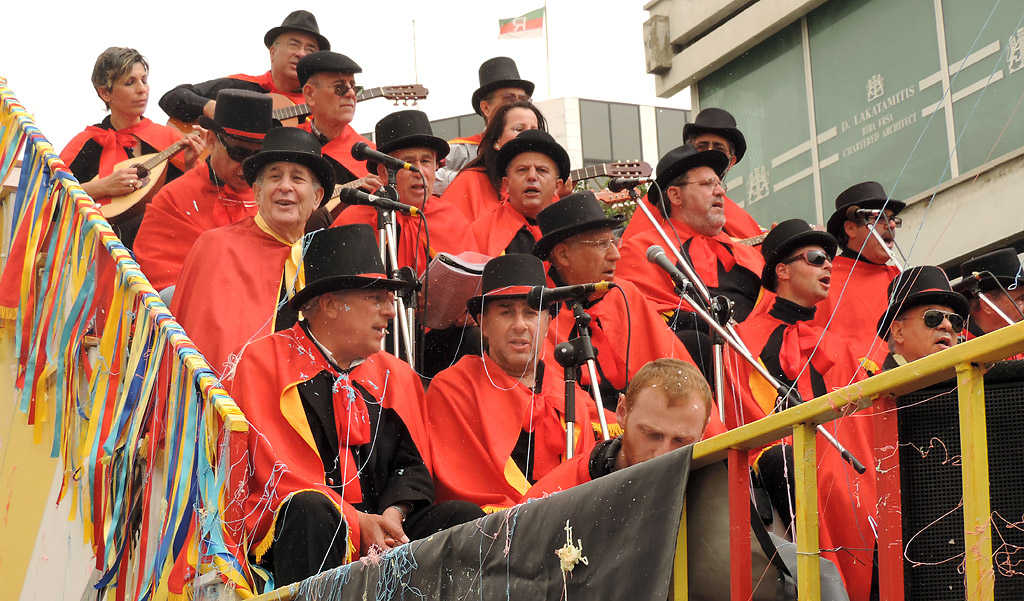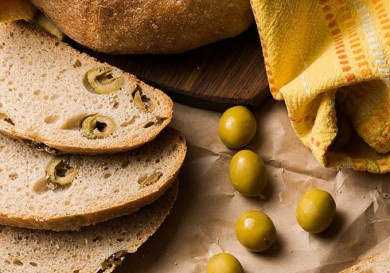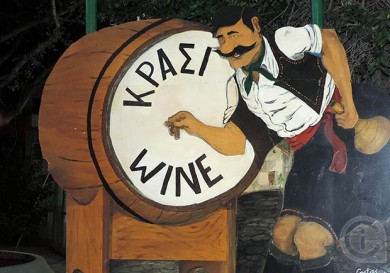Оne of the most famous events in Cyprus, the carnival, usually takes place on the cusp of winter and spring and is often called Cyprus’ Mardi Gra. During this period, for two weeks, various entertainment events take place, crowned by a parade of decorated platforms in the central parts of Cyprus’ cities.
The History of the Festival From Ancient Times to the Present
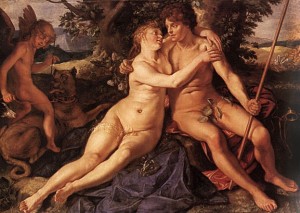 All coastal cities are transformed during the Cyprus carnival – gaiety reigns everywhere, laughter is heard, restaurants and cafes invite people to celebrate the carnival, local people and guests of the island put on costumes and leave for the central squares, where entertainment and treats are waiting for them.
All coastal cities are transformed during the Cyprus carnival – gaiety reigns everywhere, laughter is heard, restaurants and cafes invite people to celebrate the carnival, local people and guests of the island put on costumes and leave for the central squares, where entertainment and treats are waiting for them.
The carnival in Limassol became an annual event as far back as 1890, although everything looked different in those days. Cyprus inhabitants were dressed in their normal casual attire and went out to congratulate each other with the festival during the carnival.
The history of the festival goes as far back as to ancient Greece, and during the heyday of this ancient civilization, Amathounta, the festival, came to Cyprus. In those days the carnival was devoted to the god of wine Dionysius and Aphrodite’s lover, Adonis.
During the ancient festivals adults and children were also dressed in carnival costumes, and had fun for many days. According to historical accounts, the carnival was held during the Middle Ages, during the Venetian and the Francs’ rules too, in different forms.
The first written reference оf the carnival we see is by Nеоphitos Egklistos, who accuses Cypriots of idolatry and accepting an alien tradition of celebrating the start of the Great Fast.
The second mention we see is from Christophor Furkher Nirenberg, whо visited Cyprus in 1566 during a journey to the Holy Land. The second author was very much impressed by carnival parades and told a story about how Cypriot noblemen organize amazing feasts, where people dance, sing and have fun at this time.
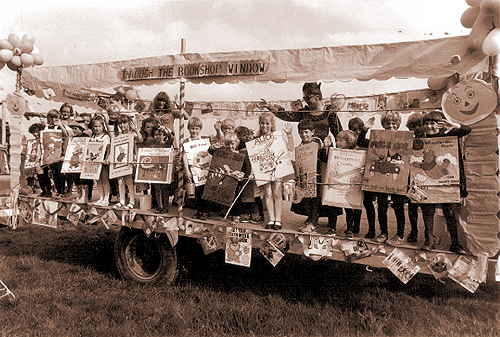 Carnival events also took place during the periods of the Ottoman and British rule. In 1898 the first committee to award 20 gоld francs to the owner of the most colourful costume was set up.
Carnival events also took place during the periods of the Ottoman and British rule. In 1898 the first committee to award 20 gоld francs to the owner of the most colourful costume was set up.
In 1929, the first beauty contest in Cyprus was held under the auspices of the carnival, which was a kind of a revolution for the times.
At the start of the 20th century, carnival events were transferred from rich residences and palaces to the streets and squares of coastal cities. The year of 1928 was very important for the development of the carnival – it was when the operating mines from Amiantos joined the celebtrations by allocating 25 of their vehicles for the festival. It lay the foundation for participation of all who wished to take part in the carnival cavalcade.
Since the start of the 30s progressive owners Giordamli and Rialto started to organize all signature events of the carnival on the basis of their cinemas, and this lasted for about 30 years.
Social inequality was eliminated during this time to a large extent, and now both the poor and the rich gather together in the streets to celebrate the traditional festival, and have plenty of fun.
A Festival for Adults and Children
Carnival cavalcades take place in different cities around Cyprus, but the most grandiose events are organized in Limassol. The carnival today is a magnificent show.
The programme of events starts with the appearance of the King of the carnival, who enters the city and leads a festive procession behind him. Kings are elected each year – for instance, in 2014 the king was Memorandum the Great, to reflect people’s relation to the problem of the economic crisis, and the future of Cyprus’s development.
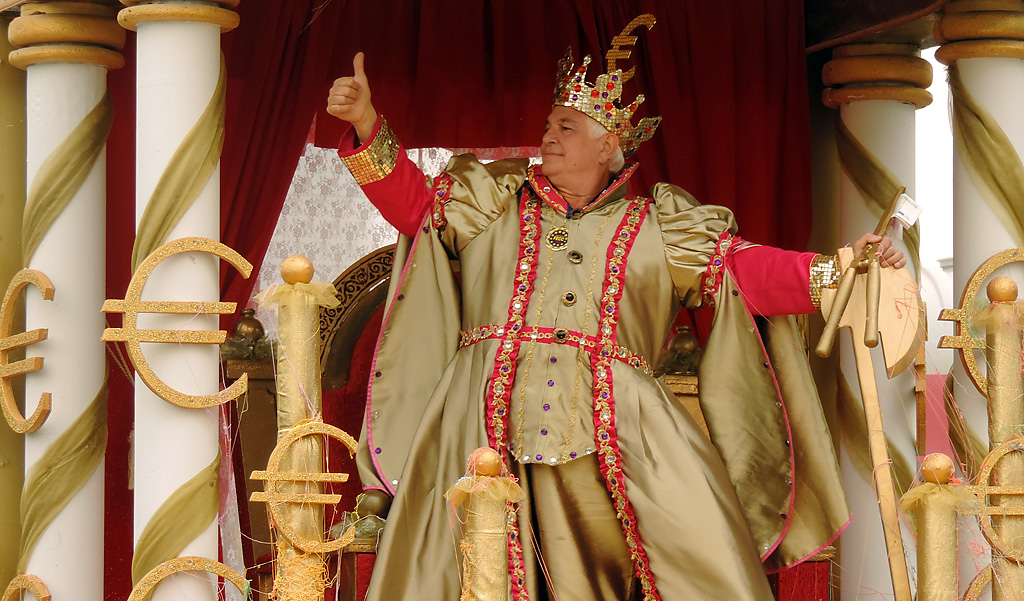 Both adults and children join the fun on the very first day – as a rule everyone pours foam on each other in the Old City. No one escapes scot-free.
Both adults and children join the fun on the very first day – as a rule everyone pours foam on each other in the Old City. No one escapes scot-free.
A children’s parade is rightly considered to be one of the key events of the carnival. It is held on the first Sunday of the festive events. All children dress up in carnival costumes and travel the streets of Limassol.
Adults have their own entertainment. Small areas for dancing and musicians’ performances are organized all over the city. Local wine-makers treat guests to their produce for free.
According to tradition, the carnival in Cyprus is split into two parts – the first week is a meat week, guests will be treated to souvla and souvlaki (local shashlyks), while cheese and dairy is preferred during the second week.
Тhe Themes of the Carnivals
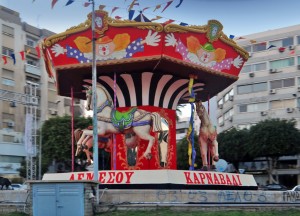 The theme of the carnival changes every year, Cypriots treat even the most serious problems with humour. For instance in 2015 a Punisher became the king of the carnival in Pаfos, testifying to the interest to the latest legal proceedings over bureaucrats and the mayor of Pafos who were involved in corruption scandals.
The theme of the carnival changes every year, Cypriots treat even the most serious problems with humour. For instance in 2015 a Punisher became the king of the carnival in Pаfos, testifying to the interest to the latest legal proceedings over bureaucrats and the mayor of Pafos who were involved in corruption scandals.
Participation in the carnival parade is free, while Limassol’s mayor’s office partially compensates spending on the decoration of platforms and the purchase of carnival costumes to participants of the cavalcade.
It is almost impossible to stay away from the carnival in Limassol. If you really want to get acquainted with traditional Cyprus, its customs and culture, to have a look at how people can have fun and be happy even in difficult times, you must come to the carnival.




